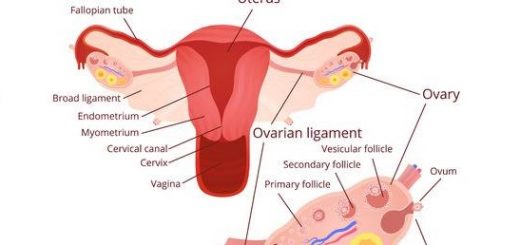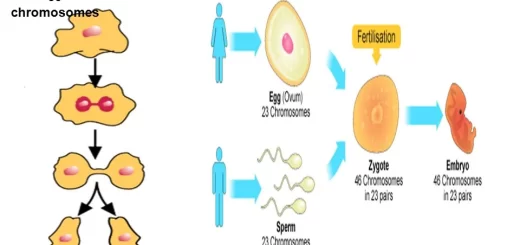Molecular technology (Genetic Engineering) advantages, Techniques and uses
After the advances in knowing the gene structure and how protein is synthesized, It is possible now to isolate the desired gene and form million copies of it inside the cells of bacteria or yeasts, It is possible to produce short strands of DNA with any desired sequence of nucleotides in many laboratories which are now equipped with “gene machines” that can be programmed.
Genetic engineering
It is possible to analyze any gene to determine the nucleotide sequence in this gene, We can compare between the structure of different genes in the same organism or different ones and we can determine the sequence of amino acids in the corresponding protein by knowing the sequence of nucleotides in the gene.
It is possible to transfer functioning genes from cells to other cells of plants or animals, We can synthesize DNA molecules by order, as in 1979, the scientist Khorana produced an artificial gene and introduced it into a laboratory culture of bacteria.
It is possible to use artificial DNA in protein synthesis experiments, we can determine how the amino acids affect the function of the protein as a whole by changing the code to eliminate a particular amino acid (or replace it) from the protein.
Techniques of molecular technology
Nuclear acid hybridization
The scientific principle of nucleic acid hybridization:
- When DNA is heated to 100° C, the hydrogen bonds linking the paired bases are disrupted and the two strands of the double helix separate to produce two single-stranded DNA which is unstable.
- When the temperature of the DNA molecule is lowered, each single strand tends to stabilize by sticking (or annealing) to another single strand to form a double helix once again.
- Any two single strands of DNA or RNA can form double strands if they are provided with at least a short complementary bases’ sequences.
- The degree of annealing between any two strands depends on how far their nitrogenous bases’ sequences are complementary to each other and this can be measured by the amount of heat required to separate them again, The more strands are bonded tightly together, the more amount of heat will be required to separate them.
- The ability of the single-stranded DNA or RNA to anneal can be used to produce hybrid or mixed double helices.
How to form a hybrid DNA
Steps of the production of hybrid DNA double helix:
- Nucleic acids from two different sources (for instance from two different species of organisms) are mixed.
- Heating them to 100°C, the two strands of the double helices separate into strands.
- When the mixture is allowed to cool, the pairing of the complementary nitrogenous bases between the strands takes place to reform some of the original helices, in addition to many new hybrid double-stranded helices (hybrid DNA) will form, where each helix is made up of one strand from each source.
Hybrid DNA is a double helix formed of two strands, one of its strand is from a living organism and its complementary strand is from another living organism.
Uses of the Hybrid DNA
The hybrid DNA is used to determine whether a particular gene is present in its genome and in what amount of a sample, as follows:
- A single-stranded sequence of nucleotides that is complementary to one strand of the gene under study is prepared by using radioactive nucleotides, so, the sequence is labeled and can be re easily detected later.
- This prepared strand is mixed with the genome of the unknown sample.
- This mixture is heated to 100°C, then allowed to cool to get a hybrid DNA (one strand is natural and the other complementary strand is radioactive).
- The concentration of the gene in the sample is indicated by the rate of formation of the radioactive double helices.
The hybrid DNA is used to determine the evolutionary relationships between the different species: The closer the evolutionary relationship between two species, the more similar their DNA nucleotide sequences should be, and therefore the greater the degree of hybridization between them.
Bacterial restriction enzymes
It was believed that viruses can invade certain strains of E.coli bacteria which are restricted to these strains, Scientists proposed that these viruses can’t grow inside other strains of bacteria, as the resistant strains of bacteria produce enzymes that recognize specific nucleotide sequences on the viral DNA and break the DNA into useless fragments, These enzymes are called “restriction endonucleases”.
Restriction endonucleases are bacterial enzymes that recognize specific nucleotide sequences on the viral DNA and break the DNA into useless fragments, It was found that the restriction enzymes are spread in microorganisms, where more than 250 kinds of these enzymes are isolated from different strains of bacteria.
Why don’t these enzymes destroy the bacterium’s DNA?
Because each species of bacteria forms modification enzymes, in addition to the restriction endonuclease enzymes, These modification enzymes recognize those particular sequences and add a methyl group (CH3) to the nucleotides on the sites of bacterial DNA which are similar to the recognition sites on the virus’s DNA, which makes the bacterial DNA more resistant to the action of these restriction enzymes.
Mechanism of the restriction enzymes
Each restriction enzyme recognizes a specific sequence of four to seven nucleotides in DNA strands which is known as a “recognition site”.
The enzyme cuts the DNA molecule at or near this recognition site, where the sequence of the nitrogenous bases on the two strands of DNA at the recognition site is the same when the sequence is read on each strand in the (5‾ → 3‾) direction, Each restriction enzyme will cleave the DNA molecule regardless of its source (viral or bacterial or plant or animal sources), as long as this DNA contains one copy or more of its specific recognition site.
The recognition site is a specific sequence of four to seven nucleotides on DNA strands that can be recognized by the restriction enzymes, then the enzyme cuts the molecule of DNA at or near this site and the sequence of nitrogenous bases on one strand is the same on the other strand (5‾ → 3‾).
Importance of the restriction enzymes
Restriction endonucleases provide a way to cut the DNA molecule into pieces with known nucleotides at their ends, Many of them also produce staggered cut ends in which the double helix is left with two single-stranded ends called “sticky ends”.
Because they will base-pair with any other single-stranded staggered ends that are produced by the same restriction endonuclease, and the cut ends can then be joined into a single strand by DNA-ligase enzyme, In this way, researchers can splice a specific section of DNA molecule into another DNA molecule.
Genetic code, formation of amino acid code and Steps of Protein synthesis
Cloning of DNA sequences, Importance of recombinant DNA and Uses of human genome



